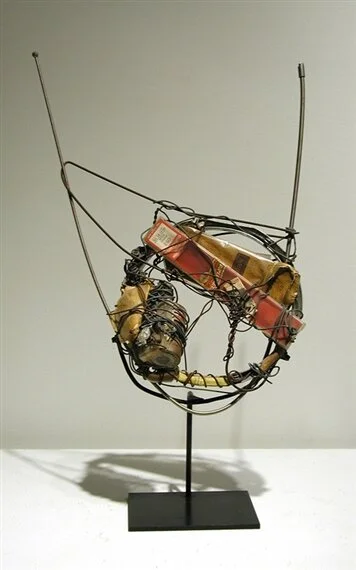FGWL #1 Lingis
Al invites you to read “Seashells” while listening to Toru Takemitsu's "10th Step (variation)."
Humans have fastened seashells into pendants and chest plaques, strung them into necklaces, beaded their hair with them, adorning themselves with their beauty. Seashells are the most ancient art objects.
Seashells are scallops, plates, cones, spirals. Their surfaces are smooth, ribbed, ridged, bristled, spiked. They are white, spotted, splotched, etched with waves of colors, nacreous, gleaming with iridescence. There are upwards of 15,000 types of seashells. On each shell the markings are, like human fingerprints, unique.
Of the 50,000 known species of mollusks, only octopods, squid, and cuttlefish have eyes with iris, a circular lens, vitreous cavity (eye gel), pigment cells, and photoreceptor cells that translate light from the light-sensitive retina into nerve signals which travel along the optic nerve to the brain—startlingly similar to human eyes. Marine mollusks who make shells have only rudimentary eyes, able to discern light and shadow. They do not see the glamor of the shells they make or those others make.
In 1978 in Philadelphia in the United States, a passerby happened upon a pile of cardboard boxes and bags put out for trash collection in a side street. He saw that they contained hundreds of bundles wrapped with wire containing all sorts of things dropped or discarded—bolts, magazine cutouts, electrical parts, batteries, coins. There were also some abstract drawings. He took them home and kept them in his attic. In 1982, they were seen by and acquired by the owner of a gallery devoted to outsider art. There were more than 1,200 of these bundles, now called sculptures, most of them four to six inches long.
The gallery owner and later journalists and amateur detectives made exhaustive inquiries but found nobody who knew anything about these objects or their maker. Because the people in the neighborhood are mostly black, it is supposed that the maker was African American; because many of the wires are heavy gauge and were apparently bent without tools, it is supposed that the maker was a man; and because all the inquiries did not locate the maker, it is supposed that he is dead. He has come to be called Philadelphia Wireman.
The variety of shapes and designs is astonishing. Their force is immediate and earnest. Some of the tightly bound bundles express bondage and oppression. Some of them are cocoons concealing small objects like precious treasures. Some of them are bound like a spider’s dying prey. Some emanate warmth and vibrancy. These sculptures show us the powers that subsist in things we dismiss and discard.
What compulsive force in this artistry—1,200 sculptures! We study the sculptures and cannot discover what drives, cravings, conflicts were in their maker. Nowhere was he projecting his subjectivity into them. He did not make these sculptures to express, exteriorize his inner self, such that others could recognize him and he recognize himself. He did not show these sculptures to anyone.
Alphonso Lingis is the author of fourteen major works over the last forty years, including The Community of Those Who Have Nothing in Common, The Imperative, Dangerous Emotions, Trust, and Violence and Splendor, works that span the history of continental philosophy, original contributions to phenomenological theory, and a series of innovative, controversial, and highly influential philosophical-ethnographic travel meditations, often focused on bodily experience. He is the preeminent English translator of the works of Maurice Merleau-Ponty and Emmanuel Levinas and Professor Emeritus of Philosophy at Penn State University.

